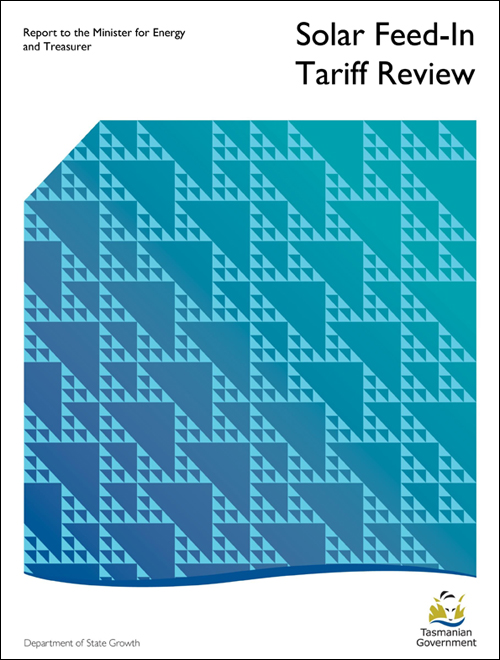The Hodgman government pointedly ignored climate change in the terms of reference for its solar feed-in tariff review. That counts as a failure.

When a government sits down to decide how it should determine the value of household solar power to its people and their economy, it can tackle it in one of two ways.
It can treat a solar installation as a home appliance, like a car, computer or space heater, evaluated for what it contributes to the state in the short-term, with a mind to fiscal prudence and the profitability of existing enterprises.
Or it could take a wider and longer perspective, looking at how home solar power might help shape the radically different economy and society Australia is headed for, where physical conditions are more demanding and every individual contribution counts.
Short-term solutions to immediate issues was the clear focus of the Hodgman government’s terms of reference for last year’s review of the Tasmanian solar feed-in tariff (FiT) – the amount paid to solar households for the energy they supply to the grid.
Within limits of the state budget and power affordability, the review was charged with comparing Tasmania’s FiT with those of other states while examining energy cost trends, system stability and reliability of supply. It delivered a finding that was affordable, prudent, limited – and wrong.
Feed-in tariffs are for the future. Solar power is recognised as a key tool for getting citizens actively engaged in mitigating carbon emissions, without which we don’t have a hope of turning that juggernaut around. But the terms of reference made no mention of emissions or climate change.
The government also asked the panel to review incentives for new installations. For the record, it settled on the current 8.5 cents a kilowatt-hour, bar a one-year grace period offering an extra 5 cents for early solar owners losing their original 28-cent deal. That doesn’t seem much of an incentive.
1st Energy, the new retailer that entered the market last week, offered an extra 5 cents for users spending over $3300 a year, but that is relatively small compensation for high power consumption.
We should not discount our island’s solar capability. Danish solar yields nearly 3 per cent of the nation’s electricity; in Belgium it’s nearly 4 per cent and in Germany over 7 per cent. All these countries get a lot less sun than we do, yet our solar output is less than 1 per cent of total generation.
Arguing that solar is irrelevant in a hydro state with no coal power to displace (except imported Victorian power) misses the point. Hydro needs rain but good rainfall is no certainty, so we need alternatives. Solar has the added advantage of being spread around the population at large.
Tasmania’s FiT review can claim to have met expectations, but seen in this light those expectations were far below where they needed to be. The terms of reference for the panel reflect an accounting approach, not a visionary one.
This has come on top of many years in which the Hodgman government has taken no decisive action to cut fossil-fuel emissions – an epic leadership failure it shares with most present and past governments in this country.
Readers who have noted the government’s claim to have achieved zero net emissions in 2015 and to be tracking for 100 per cent renewable energy by 2022 must think I’m on another planet. But both those claims are dubious, to say the least.
The first assumes perpetual carbon uptake by unharvested, continuously growing forests when the view of all experts – including the government’s own forest specialists – is that this is just wrong.
And the claim to be a 100 per cent renewable island, like all such renewable energy claims, ignores our burning of the best part of a billion litres of fossil fuel a year to power transport and industry.
Though it believes Tasmania is a global clean energy leader, the Hodgman government has done very little to make that happen. The fact is we are still far from achieving it.
Governments talk about energy security and affordability, and these are important – but not half as important as cutting carbon emissions. That should be the main focus of all energy planning.
We know that distributed household solar with batteries can contribute to that, both integrated into a grid using smart meters and off-grid in remote areas. We just need to know the scale necessary for this to work, and then to formulate a plan to make it happen.
The FiT review found that rooftop solar was less effective in cutting electricity costs than energy efficiency, and without battery storage it could do little for network operations and energy security. But this is solar as it presently exists, not as it might become.
The government wanted it that way. It restricted the terms of reference and limited the panel to public servants because it wanted to control the outcome.
We shouldn’t expect much from such reviews, but in the absence of boldness and vision in the political class, where do you turn?
THE LAUNCH of the Rob White book, Climate Change Criminology, was postponed from last week until 21 March owing to illness. Further details at FullersBookshop.com.au.
